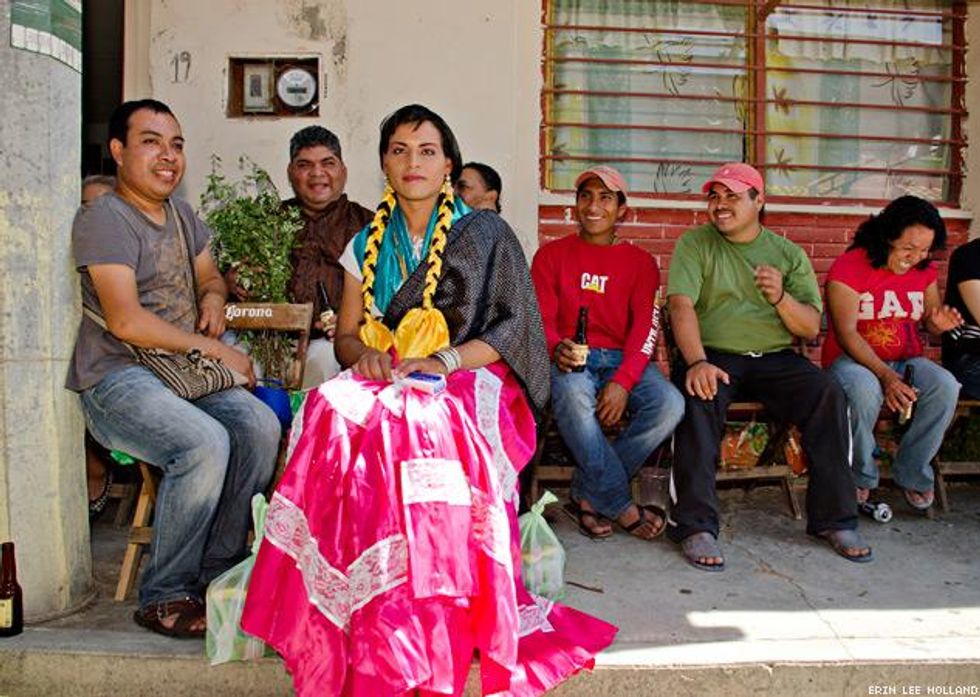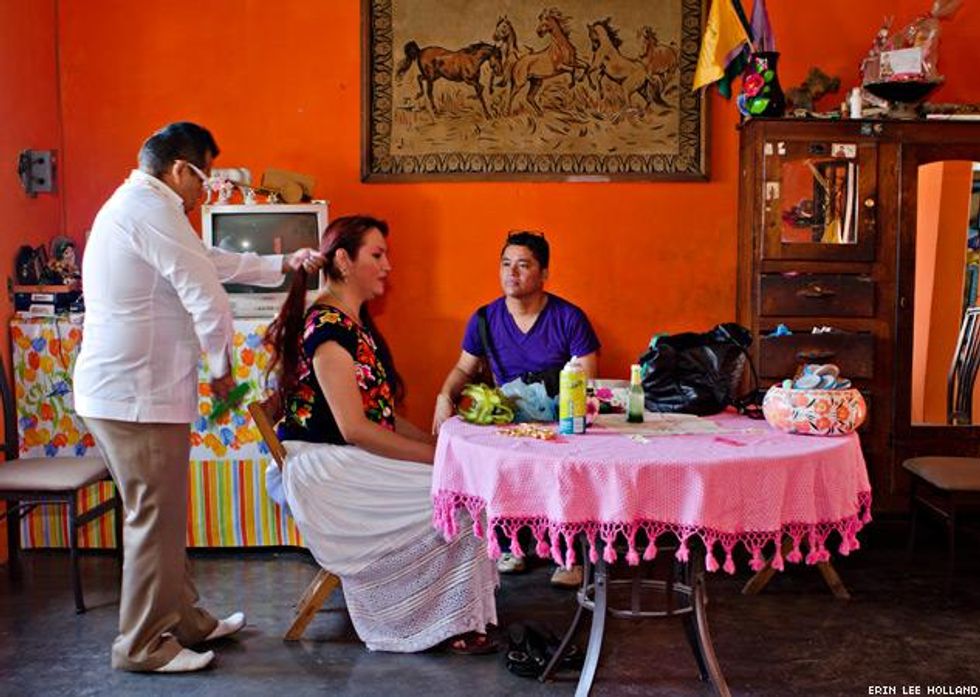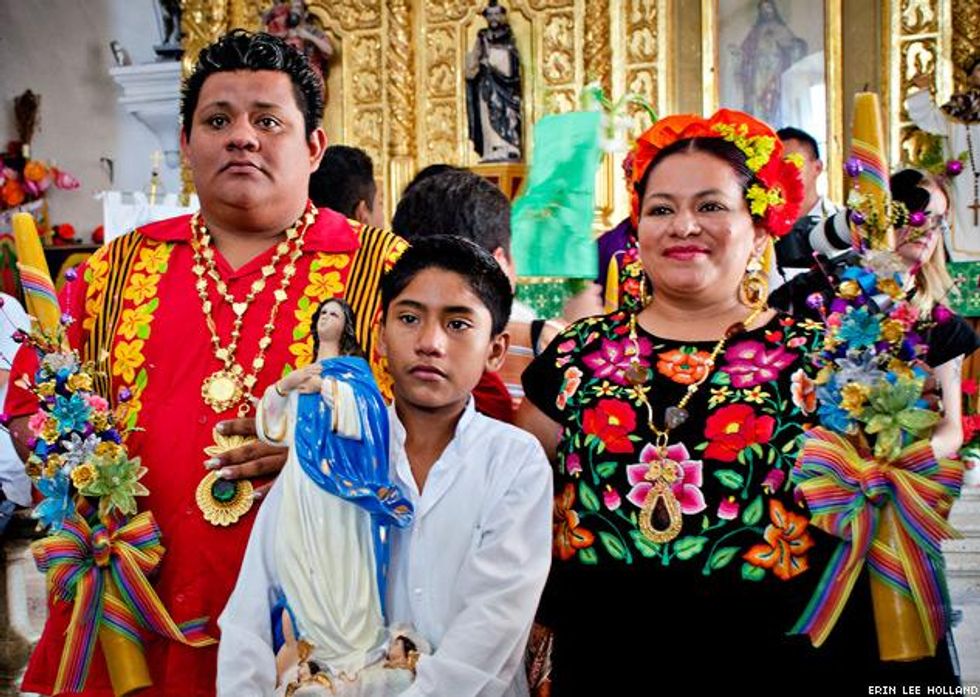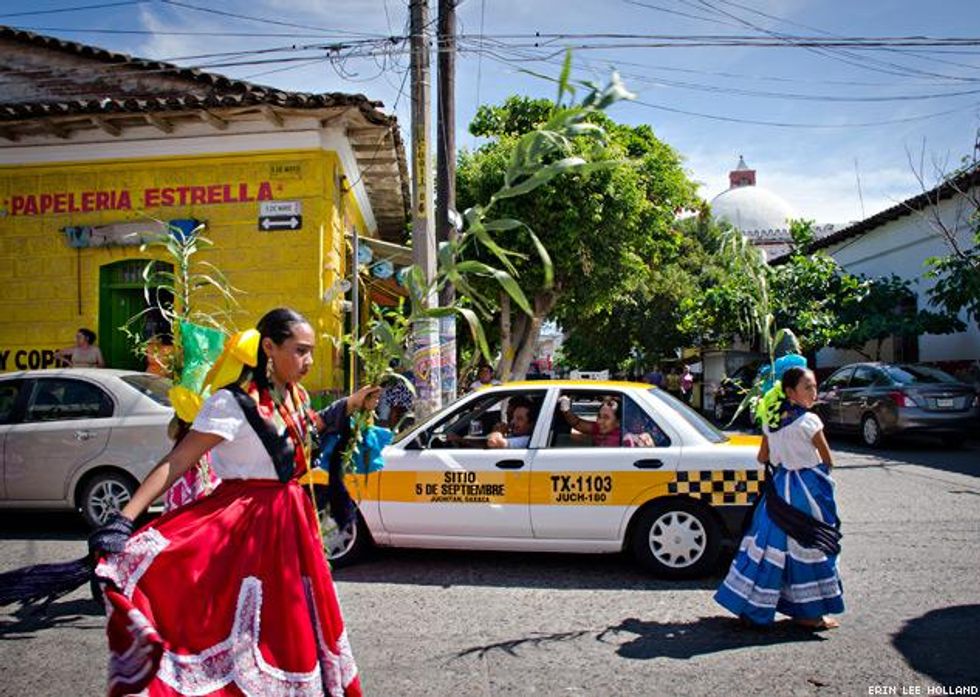
Like their Two-Spirit sisters in North America, the muxes are an integral part of Zapotec culture, revered, not reviled.
March 11 2014 6:01 AM EST
By continuing to use our site, you agree to our Privacy Policy and Terms of Use.


The first thing most people notice about muxes (pronounced MOO-shay) is that they appear to be men dressed as women. Some have had their breasts enhanced, others have nose jobs. But most wear long hair, dresses, and some makeup. The majority of muxes start young, in their teens, and are trained in womanly ways by family and friends, taking their place in a Zapotec cultural tradition that predates the Spanish colonizers. Now their traditional role has become that of caretaker.
"Sons and daughters get married and have families of their own, so the person that stays to care for the parents is the muxe," explains Pedro Martinez Linares, a well-known muxe who began his training at age 13. "That's why they are so highly valued."
Like their Two-Spirit sisters in North America, the muxes are an integral part of Zapotec culture, revered, not reviled. And like other third gender people, muxes are not gay. Some take male lovers, others take wives. And they're not transgender. They are distinct. Nor do all muxes work solely as women. Many take more "manly" career tracks: one muxe, Amaranta Gomez Regalado, ran for Mexico's congress in 2003. And despite the popular description, not all muxes dress as women. Those are just the vestidas. There are also pintadas, the less common muxes who wear men's clothing and makeup. And both come together each year for the muxes' annual pageant, the four-day long La Vela de las Autenticas Intrepidas Buscadoras del Peligro, which translates to "The Celebration of the Bold Seekers of Danger."
The vela began nearly four decades ago as a friendly celebration, says Linares. "It all started as a small party, something like a reunion with only six or seven muxes who were already nearing old age," he says. "Every year they would celebrate the life they shared together... but you know how it goes. One invited friends, then the others invited their friends and it began growing that way." Today over 5,000 people come to where it all began, Juchitan, Oaxaca, for the massive celebration. But now the focus at this "beauty pageant" isn't on poise, grace, or faces. It's on wallets. You don't so much earn the crown as buy it. "To be the mayordomo, you have to have the desire, but above all you have to have the money," says Linares. The mayordomo honor runs around 60,000 pesos (around $4,400), while the queen's crown costs about 100,000 pesos ($7,400).
As pecuniary as the modern-day festival's politics may be, the result of the pagent is loftier: a celebration of a tradition that survived Spanish conquistadores, Catholic crusaders, communist revolutionaries, and the rise of Mexico's machismo culture. And they even have the local church's respect; it hosts a Mass during the vela, and many of the muxes attend.
This photo essay continues on the following pages. >>>
 Local muxe and hairdresser (and the 2012 Mayordomo) Pedro Martinez Linares, helps his friends prepare
Local muxe and hairdresser (and the 2012 Mayordomo) Pedro Martinez Linares, helps his friends prepare The 2013 mayordomo (left) with family members posing for photos at La Misa, the Mass during the second day of the celebration.
The 2013 mayordomo (left) with family members posing for photos at La Misa, the Mass during the second day of the celebration. Guests at the vela celebration where the new queen and mayordomo are crowned.
Guests at the vela celebration where the new queen and mayordomo are crowned. Local girls march throughout the town as part of La Regada, a parade on the second day of the celebration.
Local girls march throughout the town as part of La Regada, a parade on the second day of the celebration.
Charlie Kirk DID say stoning gay people was the 'perfect law' — and these other heinous quotes